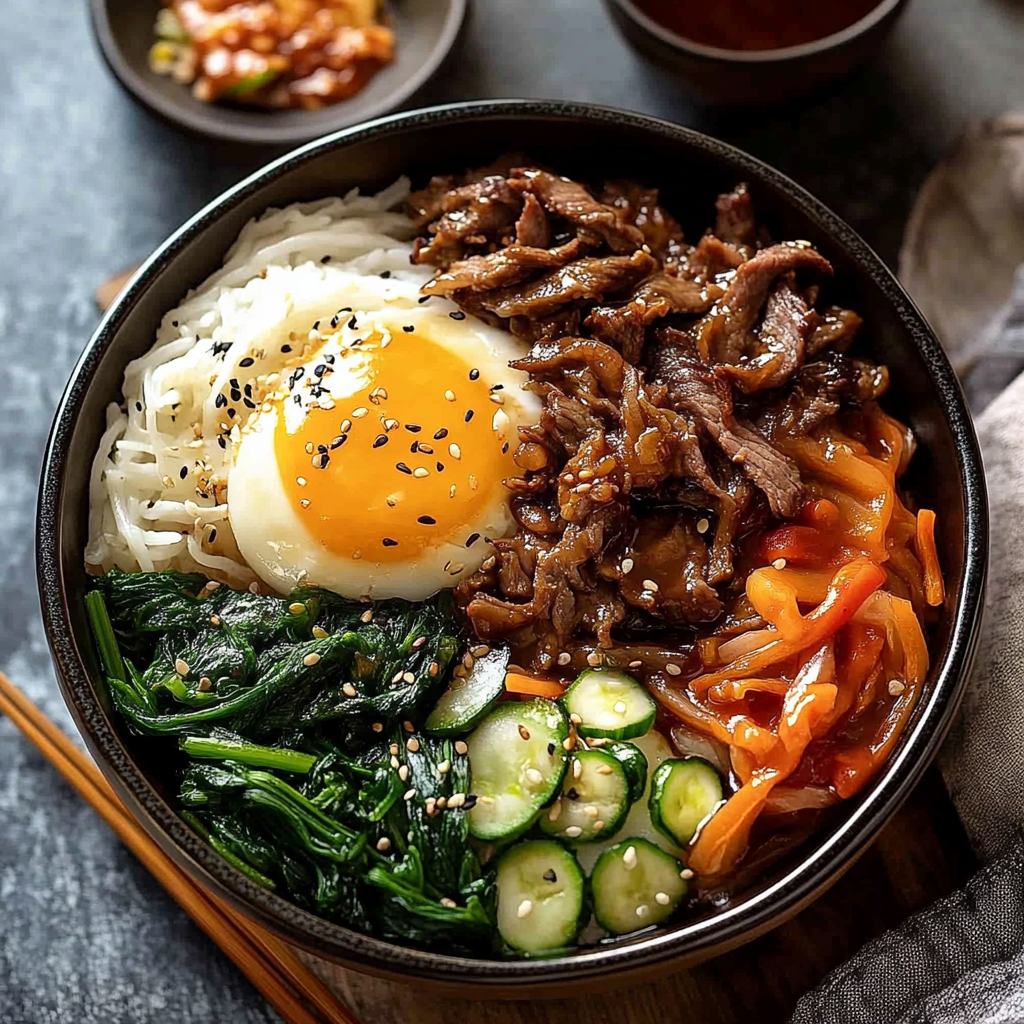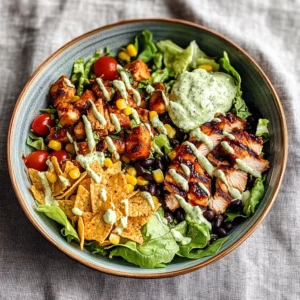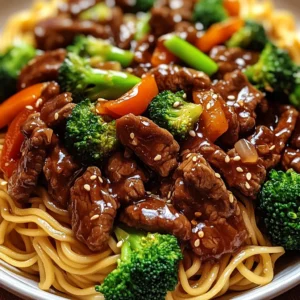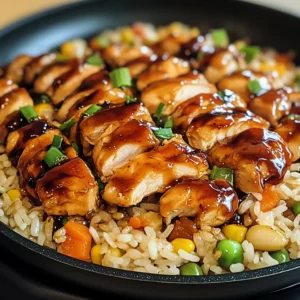Korean Beef Bibimbap Bowl is a vibrant and delicious dish that combines marinated beef, fresh vegetables, and perfectly cooked rice, topped with an egg. This culinary delight not only showcases the rich flavors of Korean cuisine but also offers a wholesome meal that can be prepared in under 30 minutes. With its colorful presentation and balance of textures, it’s perfect for both weeknight dinners and special occasions. beef and pepper rice bowl The star of this dish is the seasoned beef, which brings a savory umami flavor that complements the freshness of the vegetables and the creaminess of the egg. In this article, you’ll discover why this recipe is a must-try, what ingredients you need, how to bring it all together, and some helpful tips for making it your own.
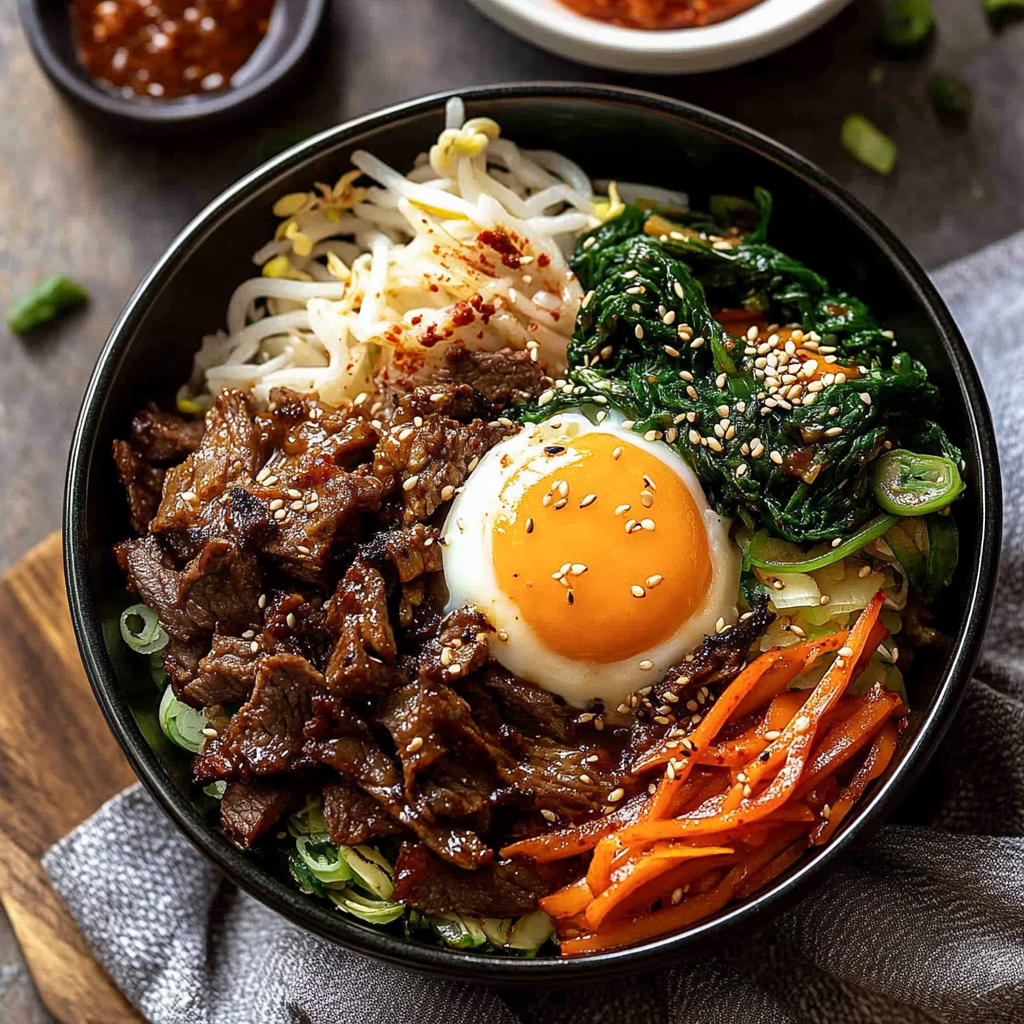
Jump to:
- Why You’ll Love This Korean Beef Bibimbap Bowl
- Ingredients for Korean Beef Bibimbap Bowl
- How to Make Korean Beef Bibimbap Bowl
- Tips and Tricks
- How to Serve Korean Beef Bibimbap Bowl
- Make Ahead and Storage
- Suggestions for Korean Beef Bibimbap Bowl
- Avoid Overcooking the Beef
- Skipping the Vegetables
- Ignoring Proper Rice Preparation
- Neglecting the Sauce
- FAQs
- What is the best cut of beef for Korean Beef Bibimbap Bowl?
- Can I make a vegetarian version of Korean Beef Bibimbap Bowl?
- How do I store leftover Korean Beef Bibimbap Bowl?
- What side dishes pair well with Korean Beef Bibimbap Bowl?
- Conclusion for Korean Beef Bibimbap Bowl
- 📖 Recipe Card
Why You’ll Love This Korean Beef Bibimbap Bowl
For more inspiration, check out this beef and noodles recipe recipe.
- Nutritious and Balanced: Packed with protein from the beef and plenty of vitamins from assorted vegetables, this bowl provides a well-rounded meal in one dish.
- Customizable Ingredients: You can easily swap out ingredients based on personal preferences or seasonal availability, making it versatile for any palate.
- Quick Meal Prep: With minimal cooking time required, this recipe is perfect for busy weekdays when you want something satisfying but don’t have hours to spend in the kitchen. For more inspiration, check out this teriyaki meatballs recipe recipe.
Ingredients for Korean Beef Bibimbap Bowl
Here’s what you’ll need to make this delicious dish:
- Ground Beef: Opt for lean ground beef for a healthier option while still ensuring enough fat for flavor.
- Cooked Rice: Use short-grain white or brown rice as the base; cook it according to package instructions for the best texture.
- Fresh Vegetables: Include carrots, spinach, bean sprouts, and cucumber for crunch and nutrition; feel free to use any favorite veggies.
- Eggs: A sunny-side-up egg is traditional; choose large eggs for best results.
For the Sauce:
- Korean Gochujang Paste: This spicy fermented chili paste adds depth; adjust quantity based on your heat preference.
- Soy Sauce: Use low-sodium soy sauce to control saltiness while boosting flavor.
The full ingredients list, including measurements, is provided in the recipe card directly below.
How to Make Korean Beef Bibimbap Bowl
Follow these simple steps to prepare this delicious dish:
Step 1: Prepare Your Rice
Begin by cooking your rice according to package instructions. Once done, keep it warm while you prepare the other ingredients.
Step 2: Cook the Beef
In a skillet over medium-high heat, add ground beef along with minced garlic and cook until browned. Drain excess fat if necessary.
Step 3: Season the Beef
Add gochujang paste and soy sauce to the cooked beef. Stir well to combine and let it simmer on low heat for about five minutes so flavors meld.
Step 4: Sauté Vegetables
In another pan, lightly sauté your chosen vegetables such as carrots and spinach until tender yet crisp. This should take around three minutes.
Step 5: Fry Eggs
In a small frying pan over medium heat, fry eggs sunny-side up until whites are set but yolks remain runny; about three minutes should suffice.
Step 6: Assemble Your Bowl
In serving bowls, layer cooked rice at the bottom followed by seasoned beef and sautéed vegetables. Top each bowl with a fried egg before serving.
Transfer to plates and drizzle with additional sauce if desired for the perfect finishing touch.
Tips and Tricks
Here are some helpful tips to ensure the best results for your dish:
- Ingredient Freshness: Use fresh vegetables to enhance flavor and texture in your bibimbap bowl.
- Rice Quality: For optimal taste, use high-quality short-grain rice which will provide stickiness necessary for holding ingredients together.
- Topping Options: Experiment with additional toppings like sesame seeds or seaweed strips for extra flavor and crunch.
How to Serve Korean Beef Bibimbap Bowl
This Korean Beef Bibimbap Bowl is versatile and pairs wonderfully with:
- Rice or Potatoes: A hearty base that soaks up the delicious sauce.
- Fresh Salad: Adds a crisp and refreshing contrast to the rich flavors of the dish.
- Crusty Bread: Perfect for enjoying every last drop of the flavorful sauce.
Feel free to pair it with your favorite sides for a personalized meal!
Make Ahead and Storage
- Make Ahead: You can prepare components like marinated beef and vegetables up to two days in advance. Store them in airtight containers in the refrigerator. Cooked rice can also be made ahead and kept in a separate container.
- Storing: Leftovers can be stored in an airtight container for up to three days in the fridge. Ensure that you separate any sauces or toppings to maintain freshness. For longer storage, consider freezing cooked beef and rice for up to three months.
- Reheating: To reheat, take out desired portions and microwave on medium power for about 2-3 minutes until heated through. Alternatively, you can reheat on the stovetop over low heat, stirring occasionally until warm, which helps preserve texture.
Suggestions for Korean Beef Bibimbap Bowl
Avoid Overcooking the Beef
When making a Korean Beef Bibimbap Bowl, overcooking the beef can lead to a tough texture. Use thinly sliced beef and cook it quickly over high heat. This method ensures that the meat remains tender and juicy, which is crucial for achieving the authentic flavor profile of this dish. sweet chili salmon bowl Aim for a medium-rare finish to maintain its moisture. Remember to marinate your beef beforehand; this step adds depth to the flavor and enhances tenderness. Always let the meat rest for a few minutes after cooking before slicing it again, as this helps retain its juices.
Skipping the Vegetables
A common mistake is neglecting the variety of vegetables in your Korean Beef Bibimbap Bowl. Each vegetable contributes unique flavors and textures, making the dish more enjoyable. Traditional choices include spinach, carrots, and bean sprouts, but feel free to incorporate others like zucchini or mushrooms. Sauté or blanch them quickly to preserve their freshness and nutrients. Presentation matters too; arrange your vegetables attractively on top of the rice. This not only enhances visual appeal but also allows each ingredient’s flavor to shine through in every bite.
Ignoring Proper Rice Preparation
Rice serves as the base for your Korean Beef Bibimbap Bowl and should be prepared correctly for optimal results. Using short-grain rice is ideal as it becomes sticky when cooked, helping to hold all ingredients together. Rinse your rice thoroughly before cooking to remove excess starch; this prevents it from becoming gummy. Cooking with a 1: 1 ratio of rice to water yields perfect results, providing fluffy grains that complement the beef and vegetables well. Allowing the rice to steam off heat for a few minutes can enhance its texture even further.
Neglecting the Sauce
The sauce plays a vital role in bringing all components of your Korean Beef Bibimbap Bowl together. A common error is overlooking its preparation or using store-bought versions that lack depth. A simple gochujang-based sauce combined with sesame oil, garlic, and sugar creates a rich flavor profile that’s essential for this dish. Adjust spice levels according to personal preference while ensuring it does not overpower other ingredients. Drizzle your sauce generously over the assembled bowl right before serving, allowing diners to mix everything together for a delightful taste experience.
FAQs
What is the best cut of beef for Korean Beef Bibimbap Bowl?
When choosing beef for your Korean Beef Bibimbap Bowl, opt for cuts like sirloin or ribeye. These cuts offer a balance of tenderness and flavor that works perfectly in stir-fry dishes. Slice the beef thinly against the grain to maximize tenderness and ensure quick cooking time on high heat. Marinating your beef prior to cooking adds an extra layer of flavor while keeping it juicy during preparation. If you prefer leaner options, flank steak can also be used effectively, though it may require slightly longer marination.
Can I make a vegetarian version of Korean Beef Bibimbap Bowl?
Absolutely! You can create a delicious vegetarian version of the Korean Beef Bibimbap Bowl by substituting meat with plant-based proteins such as tofu or tempeh. Press and marinate tofu just like you would with beef; then pan-fry until golden brown for added texture and flavor. protein-packed chicken bowl Incorporate an array of colorful vegetables such as bell peppers, zucchini, or mushrooms to create a vibrant dish full of nutrients. For added depth, you might also consider using kimchi or adding additional sauces like soy sauce or sesame dressing.
How do I store leftover Korean Beef Bibimbap Bowl?
If you have leftovers from your Korean Beef Bibimbap Bowl, proper storage is key to maintaining freshness and quality. Store each component separately in airtight containers: keep rice in one container, vegetables in another, and beef in yet another. This separation helps prevent sogginess and maintains individual flavors until you’re ready to enjoy them again. Leftovers can typically be refrigerated for up to three days; simply reheat each component separately before assembling your bowl again.
What side dishes pair well with Korean Beef Bibimbap Bowl?
To enhance your dining experience with a Korean Beef Bibimbap Bowl, consider serving complementary side dishes that highlight traditional flavors. Kimchi is an excellent choice due to its tangy taste and probiotic benefits; it pairs wonderfully with the richness of bibimbap ingredients. Other popular sides include pickled radishes or cucumber salad for refreshing crunchiness alongside your meal. You could also serve steamed dumplings or savory pancakes (jeon) as additional accompaniments that provide variety while sticking closely to traditional Korean cuisine themes.
Conclusion for Korean Beef Bibimbap Bowl
In summary, creating an authentic Korean Beef Bibimbap Bowl requires attention to detail regarding every component—from selecting quality beef cuts and preparing fresh vegetables to mastering rice cooking techniques and crafting flavorful sauces. Avoid common mistakes such as overcooking meats or neglecting vegetable varieties that contribute significantly to taste and texture balance in this dish. Korean braised potatoes By following these tips along with exploring related FAQs about variations or storage methods, you’ll elevate your culinary skills while impressing family and friends alike with this delicious bowl full of vibrant flavors! Enjoy crafting this classic dish at home while savoring every bite.
Did You Enjoy Making This Recipe? Please rate this recipe with ⭐⭐⭐⭐⭐ or leave a comment.
📖 Recipe Card
Print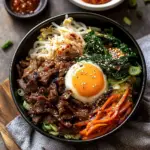
Korean Beef Bibimbap Bowl
- Total Time: 30 minutes
- Yield: Serves 4
Description
Experience the vibrant flavors of Korean cuisine with this delicious Beef Bibimbap Bowl. Featuring marinated ground beef, fresh vegetables, and perfectly cooked rice, this colorful dish is topped with a sunny-side-up egg for a delightful meal ready in under 30 minutes. Each bite is a harmonious blend of savory, fresh, and creamy textures, making it perfect for quick weeknight dinners or special occasions.
Ingredients
- 1 lb lean ground beef
- 2 cups cooked short-grain rice
- 1 cup carrots (julienned)
- 1 cup fresh spinach
- 1 cup bean sprouts
- 1 cucumber (sliced)
- 2 large eggs
- 2 tbsp Korean gochujang paste
- 2 tbsp low-sodium soy sauce
- 2 cloves garlic (minced)
Instructions
- Cook the rice according to package instructions and keep warm.
- In a skillet over medium-high heat, brown the ground beef with minced garlic.
- Drain excess fat and stir in gochujang and soy sauce; simmer for 5 minutes.
- Sauté carrots and spinach in a separate pan until tender (about 3 minutes).
- Fry eggs sunny-side up in a small pan until whites are set.
- To serve, layer warm rice in bowls, top with seasoned beef, sautéed vegetables, and fried eggs.
- Prep Time: 10 minutes
- Cook Time: 20 minutes
- Category: Main
- Method: Frying
- Cuisine: Korean
Nutrition
- Serving Size: 1 bowl (approx. 450g)
- Calories: 550
- Sugar: 6g
- Sodium: 790mg
- Fat: 28g
- Saturated Fat: 10g
- Unsaturated Fat: 15g
- Trans Fat: 0g
- Carbohydrates: 54g
- Fiber: 3g
- Protein: 28g
- Cholesterol: 225mg
